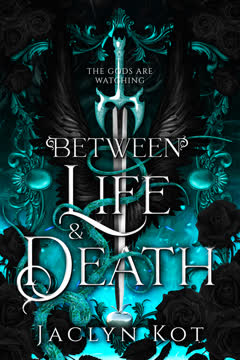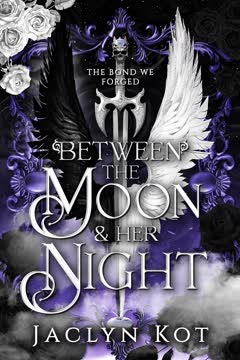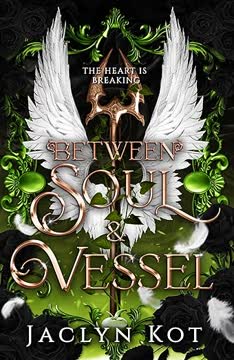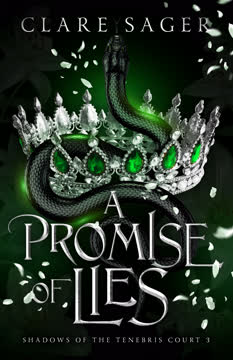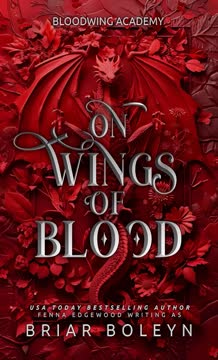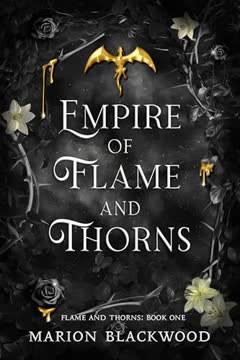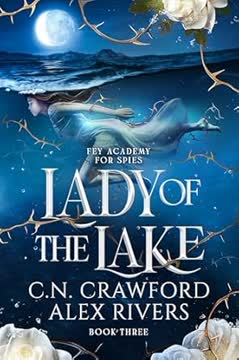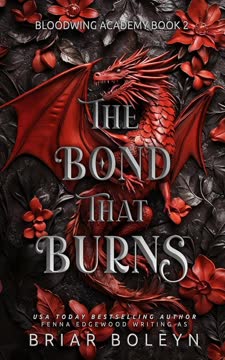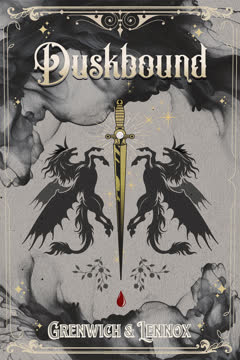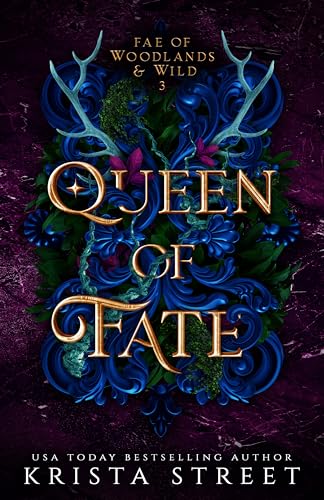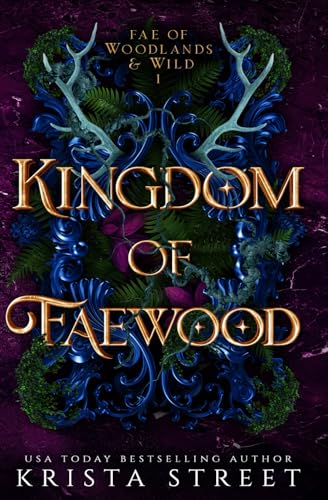Plot Summary
Whittling Lessons and Loss
Sage, a young woman with a hidden power, grows up in a world where those with magical Curses are hunted and executed. Her closest friends are Kaleb, her brother, and Adelina, a fellow Cursed. Sage's mentor, Ezra, teaches her resilience and self-discipline through simple acts like whittling, but the lesson is cut short when Adelina is discovered using her Earth Curse and is burned at the pyre. Sage's first taste of loss and injustice sets the tone for her life, forging her into someone who will not bow to oppression.
Cursed and Condemned
Sage's world is defined by fear and secrecy. The Cursed live under constant threat from the king's soldiers and the religious zealotry of Edenvale. Sage's refusal to hide her true self, and her inability to save Adelina, haunt her. The trauma of loss and the iron collar that suppresses her powers become symbols of her captivity. The king's laws are absolute, and Sage's family is torn apart, setting her on a path of vengeance and rebellion.
Death's Bargain
Sage's journey intertwines with Von, the God of Death, who is both her enemy and her fated mate. Von is bound by a tattooed bargain to sacrifice himself for Sage's life, leaving him in a comatose state. Sage, desperate to save him, learns that breaking such a deal requires the mythical Blade of Moram. The theme of sacrifice—of self, love, and power—emerges as central, as Sage weighs her own happiness against the lives of others.
The Golden Prince's Game
Imprisoned in the castle, Sage meets Aurelius, the Golden Prince, who is revealed to be the reincarnated God of Life. Their connection is immediate and magnetic, but fraught with manipulation and secrets. Aurelius is both charming and dangerous, his intentions unclear. Sage is drawn into his orbit, torn between the intoxicating pull of their shared divinity and her loyalty to Von. The prince's court is a web of intrigue, and Sage must navigate it to survive.
Chains, Collars, and Castles
Sage's time in the castle is marked by both luxury and imprisonment. She is dressed, trained, and paraded as a potential consort, but the iron collar around her neck is a constant reminder of her lack of agency. Through encounters with servants, guards, and the prince, Sage begins to reclaim her sense of self. The castle's hidden passages and political machinations mirror her internal struggle to break free from the roles others have forced upon her.
The King's Cruelty
The king's reign is defined by violence and the systematic extermination of the Cursed. Sage witnesses firsthand the horrors of the Well, a dungeon where the Cursed are tortured and harvested for their magical essence. The king's court is a den of vipers, and even those who appear kind are complicit in the regime's brutality. Sage's resolve to kill the king hardens, and she begins to plot his assassination, gathering allies among the oppressed.
Lovers, Lies, and Betrayal
Sage's relationships with Von and Aurelius become increasingly complex. Von, though absent, haunts her dreams and memories, while Aurelius seduces her with promises of power and belonging. Both men are revealed to be gods with their own agendas, and Sage is caught between their rivalries. Betrayals—both personal and political—abound, and Sage must decide whom to trust as the lines between love and manipulation blur.
The Goddess Awakens
As Sage's memories of her past life as the Goddess of Life return, she begins to understand the true extent of her power and the depth of her connection to both Von and Aurelius. The revelation that her heart—literally and metaphorically—was given to her by Aurelius complicates her feelings and her fate. Sage's awakening is both painful and liberating, as she realizes she must forge her own destiny, not simply play the roles others have written for her.
The Well of Despair
Thrown into the Well, Sage finds herself among hundreds of Cursed prisoners, stripped of hope and dignity. The Well is a microcosm of the kingdom's cruelty, but also a crucible for resistance. Sage rallies the prisoners, using her leadership and cunning to orchestrate a mass escape. The experience cements her role as a symbol of hope and rebellion, and she emerges from the Well determined to save not just herself, but all the Cursed.
Escape and Exodus
Sage leads the prisoners through hidden passages and across treacherous terrain, pursued by the king's forces. The journey is grueling, and many are lost to hunger, cold, and violence. Along the way, Sage's compassion and determination inspire loyalty, and she is reunited with old friends and allies. The escape is both a literal and symbolic breaking of chains, but freedom comes at a steep price.
The Army of Demi Gods
Aurelius, now king, reveals his plan to exterminate the Cursed using an army of artificially created Demi Gods—beings born from the forced breeding and sacrifice of mortal women. The true extent of his monstrosity is laid bare, and Sage is horrified to discover that even those she once trusted are complicit. The Cursed must now face an enemy that is both divine and inhuman, and the stakes of the conflict are raised to apocalyptic levels.
The Blade of Moram
To save Von and break the cycle of violence, Sage must retrieve the Blade of Moram from Saphira, the vengeful Goddess of War. The quest is fraught with danger and moral compromise, as Sage is forced to trade away Von's feathers—symbols of their bond—for the blade. The journey is as much about self-discovery as it is about acquiring a weapon, and Sage must confront the consequences of her choices.
War on the Cursed Lands
The Cursed Lands become a battlefield as Aurelius's army sweeps across the continent, burning villages and slaughtering innocents. Sage, now fully awakened as the Goddess of Life, leads the resistance, wielding both her magic and her leadership to protect her people. The battles are brutal and costly, and the lines between friend and foe blur as desperation mounts. The war is not just for territory, but for the soul of the world.
The Sun and Moon Collide
The final battle pits Sage against Aurelius, sun against moon, life against life. Their powers clash in a cataclysmic duel that threatens to destroy everything. The Blade of Moram becomes the instrument of both salvation and destruction, as Sage realizes that the only way to end the cycle is through sacrifice. The confrontation is both epic and intimate, as centuries of love, hate, and longing come to a head.
Sacrifice and Salvation
Sage sacrifices herself, plunging the Blade of Moram into her own heart—and Aurelius's—breaking the bonds that have held them both captive. Her death is both an ending and a beginning, as it frees Von from his bargain and ends Aurelius's reign of terror. The act of self-sacrifice is the ultimate assertion of agency, and Sage's legacy becomes a beacon of hope for the Cursed and all who yearn for freedom.
The Ender of Realms
Von, devastated by Sage's death, unleashes his full power as the Ender of Realms, threatening to destroy the world if the Three Spinners—the goddesses of Fate, Destiny, and Free Will—do not restore her. The gods are forced to confront the consequences of their own machinations, and the true nature of love, sacrifice, and free will is laid bare. The cycle of life and death is revealed to be both a curse and a gift.
Freedom's Price
Sage is restored, but at great cost. The world is forever changed by the events of the war, and the survivors must reckon with the trauma and loss they have endured. Sage, Von, and their allies begin the work of rebuilding, forging a new society based on compassion, justice, and true freedom. The lessons of the past are not forgotten, but serve as the foundation for a better future.
Between Life and Death
The story ends with Sage and Von—sun and moon, life and death—standing together, not as pawns of fate, but as partners who have chosen each other. The cycle of oppression is broken, and the world is left with the hope that, between sun and moon, between life and death, there is always the possibility of something new. The power of choice, love, and self-determination is affirmed as the true legacy of their journey.
Characters
Sage (Aurelia, Lady Light)
Sage is the protagonist, a young woman born Cursed in a world that hunts her kind. She is the reincarnation of the Goddess of Life, but spends much of her life unaware of her true nature. Her journey is one of self-discovery, as she moves from victim to leader, from pawn to player. Sage's relationships—with her brother Kaleb, her mentor Ezra, her friends, and her lovers Von and Aurelius—are central to her development. She is defined by her compassion, her refusal to bow to tyranny, and her willingness to sacrifice herself for others. Psychologically, Sage is marked by trauma, loss, and the struggle to reconcile her mortal and divine selves. Her arc is one of reclaiming agency and forging her own destiny.
Von (God of Death)
Von is the God of Death, Sage's fated mate, and the story's most complex antihero. He is both a source of danger and salvation, bound by ancient bargains and haunted by past mistakes—most notably, cursing Sage to barrenness in a previous life. Von's love for Sage is obsessive, protective, and at times destructive, but ultimately redemptive. He is willing to sacrifice everything, even the world itself, to save her. Von's psychological landscape is shaped by loneliness, guilt, and the burden of immortality. His development is a journey from villainy to vulnerability, as he learns the true meaning of love and choice.
Aurelius (God of Life, Golden Prince)
Aurelius is the God of Life, Sage's former husband, and the primary antagonist. He is charming, seductive, and initially appears as a potential savior, but is revealed to be manipulative, cruel, and obsessed with control. His love for Sage is possessive and conditional, rooted in the fact that her heart was literally made from his. Aurelius's psychological profile is that of a narcissist, unable to accept rejection or the autonomy of others. His descent into monstrosity—creating an army of Demi Gods through rape and murder—serves as a cautionary tale about the dangers of unchecked power and entitlement.
Kaleb
Kaleb is Sage's brother and her anchor throughout her journey. After his death, he becomes a reaper in the Spirit Realm, continuing to watch over Sage and aid her from beyond. Kaleb's love for his sister is unwavering, and his own arc is one of acceptance and growth as he finds new purpose in the afterlife. He represents the enduring power of family and the importance of support systems in the face of adversity.
Ezra (Goddess of Free Will, Mentor)
Ezra is Sage's mentor, a mysterious immortal who guides her through hardship and self-discovery. She is revealed to be the Goddess of Free Will, embodying the power of choice and the importance of forging one's own path. Ezra's teachings—both practical and philosophical—are instrumental in Sage's development. She is a symbol of resilience, adaptability, and the quiet strength that comes from knowing oneself.
Harper
Harper is Sage's best friend and a fellow Cursed. She is a survivor, a fighter, and a source of both comic relief and emotional grounding. Harper's journey mirrors Sage's in many ways, as she grapples with loss, trauma, and the search for belonging. Her relationship with her twin brother Ryker is central to her character, and her loyalty to Sage is unwavering.
Ryker
Ryker is Harper's twin and a key ally in Sage's rebellion. He is a warrior, both physically and emotionally, and serves as a bridge between the Cursed and the divine. Ryker's own romantic and familial struggles add depth to his character, and his unwavering support for Sage is a testament to the power of chosen family.
Saphira (Goddess of War)
Saphira is Von's sister and the Goddess of War. She is driven by a sense of betrayal and loss, having had her wings torn from her by Von. Saphira's actions are motivated by a desire for vengeance and a refusal to forgive, but she is also a tragic figure, shaped by the violence and cruelty of the gods. Her interactions with Sage and Folkoln reveal the complexities of divine family dynamics and the corrosive effects of power.
Folkoln (God of Chaos)
Folkoln is Von's brother and the God of Chaos. He is a trickster, a disruptor, and a source of both danger and aid. Folkoln's motivations are often inscrutable, but he ultimately sides with Sage and Von, helping to break the bargain and retrieve the Blade of Moram. His chaotic nature masks a deep understanding of the world's underlying patterns and the necessity of change.
Arkyn (God of Truth, King's Advisor)
Arkyn is the king's advisor, a Demi God with the power to detect lies. He is torn between loyalty to his father, Aurelius, and his own moral compass. Arkyn's journey is one of redemption, as he ultimately aids Sage in her escape and stands against the atrocities committed by Aurelius. He represents the struggle to do what is right in a world where truth is often punished.
Plot Devices
Reincarnation and Lost Memories
The narrative is structured around Sage's gradual recovery of her past life as the Goddess of Life. Her lost memories serve as both a mystery and a metaphor for the journey of self-discovery. The device allows for the exploration of fate versus free will, as Sage must decide whether to repeat the mistakes of her past or forge a new path. The slow unveiling of her true identity is mirrored by the gradual awakening of her powers and agency.
Tattooed Bargains and Magical Contracts
Tattooed bargains—magical contracts inked into the skin—are central to the plot. They represent the inescapable consequences of choices made, both by mortals and gods. Von's bargain to sacrifice himself for Sage, and the quest to break it, drive much of the action. The device is used to explore themes of agency, consent, and the price of love.
Duality and Mirrored Relationships
The story is built on a series of dualities: Sage and Von, Sage and Aurelius, mortal and divine, freedom and captivity. These mirrored relationships are used to explore the complexities of love, power, and identity. The sun and moon motif recurs throughout, symbolizing the tension between opposing forces and the possibility of harmony.
Foreshadowing and Prophecy
Prophecies, dreams, and the words of the Three Spinners (Fate, Destiny, Free Will) are woven throughout the narrative, creating a sense of inevitability while also highlighting the importance of choice. Foreshadowing is used to build tension and to suggest that, while fate may set the stage, it is the characters' decisions that determine the outcome.
The Well and the Escape
The Well serves as both a literal and symbolic prison, representing the lowest point of despair for the Cursed. The mass escape, orchestrated by Sage, is a turning point in the narrative, demonstrating the power of solidarity and the possibility of liberation even in the darkest circumstances. The device is used to explore themes of resistance, leadership, and the cost of freedom.
The Blade of Moram
The Blade of Moram is the key to breaking the cycle of violence and sacrifice. Its retrieval requires Sage to make difficult bargains and to confront the consequences of her choices. The blade is both a tool of destruction and a symbol of agency, representing the power to end old cycles and begin anew.
Analysis
Between Sun and Moon is a sweeping dark romantasy that interrogates the nature of power, agency, and the cycles of oppression and liberation. Through Sage's journey from hunted Cursed girl to awakened goddess, the novel explores the costs of love, the trauma of betrayal, and the redemptive power of self-determination. The story's central relationships—between Sage, Von, and Aurelius—serve as allegories for the struggle between freedom and control, compassion and cruelty, life and death. The use of reincarnation, magical bargains, and mythic quests allows the narrative to grapple with questions of fate and free will, ultimately affirming that true freedom comes not from the absence of constraints, but from the courage to choose one's own path. The novel's unflinching portrayal of trauma, resilience, and the messy, painful process of healing makes it both a thrilling fantasy and a deeply human story about the price—and the promise—of hope.
Last updated:
FAQ
Synopsis & Basic Details
What is Between Sun and Moon about?
- A Hunted Protagonist's Journey: Between Sun and Moon follows Sage, a young woman with a hidden magical Curse, living in a world where Cursed individuals are persecuted and executed by the ruling Crown of Edenvale. Her life is upended by personal tragedy, setting her on a path of vengeance against the tyrannical king.
- Entangled Divine Destinies: Sage's quest for justice leads her into the complex world of Old and New Gods, where she discovers her own forgotten past as the Goddess of Life, Aurelia. She becomes entangled in a cosmic rivalry between Von, the morally grey God of Death and her fated mate, and Aurelius, the charismatic but manipulative God of Life and her former husband.
- Struggle for Freedom: The narrative explores Sage's fight for personal agency and the liberation of her people, the Cursed, from systemic oppression. It delves into themes of love, betrayal, sacrifice, and the profound choices that shape destiny, culminating in a war that threatens to reshape the very fabric of the realms.
Why should I read Between Sun and Moon?
- Emotionally Charged Narrative: Readers are drawn into an intense emotional rollercoaster, experiencing devastating heartache, fierce loyalty, and passionate romance. The story's raw portrayal of trauma and resilience offers a deeply human core within its fantastical setting.
- Complex Moral Landscape: The book excels in its morally grey characters, particularly Von, the God of Death, who challenges traditional hero archetypes. This complexity invites readers to question motivations and allegiances, adding layers to the "good versus evil" dynamic.
- Unique World-Building & Magic: Jaclyn Kot crafts a rich, immersive world with a distinct magic system, including elemental Curses, divine powers, and intricate "tattooed bargains." The interplay between the Living, Immortal, and Spirit Realms, along with the unique origins of gods and their powers, provides a fresh take on fantasy lore.
What is the background of Between Sun and Moon?
- A World Divided by Magic: The story is set in a realm where magic, known as "Curses," is feared and suppressed by the human monarchy of Edenvale. This creates a stark societal divide between the "Cursed" and "mortals," leading to systematic persecution and "Cleansings" (executions).
- Ancient Divine Conflict: The underlying conflict stems from an ancient war between the Old Gods (led by Von, God of Death) and the New Gods (led by Aurelius, God of Life). This historical divine struggle directly impacts the current mortal world, as the Cursed are descendants of the Old Gods, making them targets of the New God-worshipping Crown.
- Interconnected Realms: The narrative spans three interconnected realms: the Living Realm (where mortals and Cursed reside), the Immortal Realm (home to the New Gods and their creations), and the Spirit Realm (ruled by the Old Gods and where souls go after death). Travel between these realms, though difficult, is central to the plot and character journeys.
What are the most memorable quotes in Between Sun and Moon?
- "To those considering taking a bite of an apple, be wary of those little, black seeds, won't you?": This opening dedication subtly foreshadows the pivotal role of apples and seeds in the story, particularly in the context of Von's curse on Sage and the deals made, hinting at hidden dangers and consequences. It links to the biblical allusion of forbidden fruit and knowledge.
- "You are mine, Kitten. And I do not share what is mine.": Spoken by Von, this quote encapsulates his possessive and territorial love for Sage, a core aspect of his morally grey character. It highlights the intense, primal bond between them, contrasting sharply with Aurelius's more manipulative claims of ownership.
- "My name is Sage!": This powerful declaration by Sage, as she breaks free from Aurelius's control and embraces her true identity, marks a critical turning point in her journey. It signifies her rejection of the name Aurelius gave her and her assertion of self-determination, embodying the novel's central theme of agency.
What writing style, narrative choices, and literary techniques does Jaclyn Kot use?
- First-Person, Emotion-Driven Narrative: The story is primarily told from Sage's first-person perspective, immersing the reader deeply in her emotional and psychological journey. Kot's prose is highly sensory and visceral, focusing on Sage's internal turmoil, physical sensations, and raw emotional responses, making her experiences intensely felt.
- Fragmented Memory & Non-Linear Revelation: A key narrative choice is the gradual, often painful, return of Sage's lost memories. These memories are presented as vivid, disorienting flashes, creating a non-linear revelation of her past life. This technique mirrors Sage's internal struggle with identity and keeps the reader actively piecing together the larger narrative puzzle.
- Symbolic Imagery & Sensory Detail: Kot frequently employs rich symbolic imagery, such as the sun and moon, specific colors (gold, black, red), and recurring objects (collars, feathers, apples, the Blade of Moram). These are often paired with strong sensory details—smells (saffron, bourbon, rotting corpses), tastes (honey, copper, bitter herbs), and tactile sensations (cold stone, burning heat, biting metal)—to deepen thematic resonance and immerse the reader in the world.
Hidden Details & Subtle Connections
What are some minor details that add significant meaning in Between Sun and Moon?
- Ezra's Whittling Lesson: Early in the book, Ezra teaches Sage about self-discipline through whittling, stating, "There is a thin line between success and failure. Do you know what determines either outcome? Not giving up on something?" This seemingly simple lesson foreshadows Sage's relentless perseverance through immense suffering and betrayal, ultimately leading to her success in saving the Cursed and herself.
- The Black Feather Motif: Throughout the narrative, black feathers appear, often signaling Von's presence or influence, even when he is physically absent or in raven form. Later, it's revealed that Sage has a chest full of these feathers, which Saphira desires. These feathers symbolize Von's essence, his connection to Sage, and become a literal bargaining chip, highlighting the deep, often unseen, ties between them.
- The Orchard's Symbolic Destruction: Aurelius's act of cutting down Sage's apple orchard, the only thing she felt was "hers," is a profound symbolic act. The orchard, grown from seeds Von gave her, represents Sage's life-giving power and her connection to the Old Gods. Its destruction by Aurelius underscores his controlling nature, his hatred for Von, and his desire to sever Sage's ties to her past and her true self.
What are some subtle foreshadowing and callbacks in Between Sun and Moon?
- Adelina's Fox Carving: Early on, Sage struggles to carve a fox for Adelina, creating "two blobs with lopsided ears." This seemingly minor detail subtly foreshadows Sage's initial struggle to fully embody her true self and powers, which are initially "lopsided" or incomplete. Ezra's help in shaping the fox mirrors her later guidance in Sage's self-discovery.
- Von's "Parasite" Comment: When Von observes Sage's connection to Aurelius, he wonders if the "parasite I planted within their lives turned around and burrowed into mine?" This foreshadows the revelation that Sage is literally Von's heart, a "parasite" in his body that he cannot live without, and hints at the depth of his unexpected emotional entanglement with her.
- The "Black Snow" in the Spirit Realm: Upon arriving in the Spirit Realm, Sage observes "black, glittering cinders" falling like "black snow." This unique environmental detail subtly foreshadows the destructive power of the God of Death and the grim reality of his realm, contrasting with the vibrant, life-filled imagery of Aurelius's domain.
What are some unexpected character connections in Between Sun and Moon?
- Ezra's True Identity as Goddess of Free Will: Ezra is initially presented as Sage's wise, eccentric mortal mentor. The revelation that she is an ancient immortal, the Goddess of Free Will, who chooses to live as a mortal and experience life fully, is a profound and unexpected twist. This connection recontextualizes her teachings and deepens the theme of choice versus fate.
- Lyra and Graiyson as Siblings: The quiet, seemingly unrelated characters of Lyra (Harper's friend) and Graiyson (the boy from the Well) are unexpectedly revealed to be siblings. This connection highlights the widespread impact of the king's cruelty on families and underscores Sage's role in reuniting them, emphasizing the theme of chosen family and collective hope.
- The Dressmaker as Aurelius's Former Lover: The dressmaker's intense animosity towards Sage is initially attributed to her being Cursed. The unexpected reveal that she was Aurelius's former lover, discarded when Sage appeared, adds a layer of personal betrayal and jealousy to the political conflict. It also subtly exposes Aurelius's casual cruelty and objectification of women.
Psychological, Emotional, & Relational Analysis
What are some unspoken motivations of the characters in Between Sun and Moon?
- Aurelius's Need for Absolute Control: Beyond his stated desire for power and heirs, Aurelius's deepest unspoken motivation is an insatiable need for absolute control, stemming from his past as the "King of Kings" and his literal creation of Sage. His actions, from forcing his ichor on Sage to creating Demi-Gods, are driven by a desire to dominate and possess, rather than genuinely love or lead.
- Von's Hidden Self-Sacrifice: While Von often acts with a "bastard" persona and claims revenge as his motive, his unspoken motivation is a profound, self-sacrificing love for Sage. His initial curse on her (barrenness) was a twisted form of protection, and his refusal to re-forge their bond early on was to give her choice, something Aurelius never offered. This reveals a deeper, tormented compassion beneath his dark exterior.
- Sage's Subconscious Yearning for Freedom: Even before regaining her memories, Sage's actions, such as her defiance against the king and her discomfort with societal expectations, are driven by a subconscious yearning for the freedom she lacked in her past life as Aurelia. Her "mortal" choices are often a manifestation of her true self rebelling against the constraints of her divine past.
What psychological complexities do the characters exhibit in Between Sun and Moon?
- Sage's Identity Dissociation and Integration: Sage grapples with a profound psychological complexity: the dissociation between her current "mortal" self and her past "goddess" identity (Aurelia). Her journey is a painful process of integrating these two selves, reconciling the trauma of her past with her present experiences, and ultimately choosing who she wants to be, rather than who she was created or forced to be.
- Von's Internalized "Beast" and Loneliness: Von, as the God of Death and "Ender of Realms," constantly battles an internal "beast" (Nockrythiam) that urges him to destroy. His psychological complexity lies in his struggle to control this destructive impulse, often manifesting as self-isolation and a deep-seated loneliness. His actions, though seemingly cruel, are often a desperate attempt to protect Sage while keeping his darker nature in check.
- Aurelius's Narcissistic Entitlement: Aurelius exhibits classic narcissistic traits, believing himself inherently superior and entitled to control others, especially Sage, whom he literally created from his own heart. His inability to accept rejection, his gaslighting, and his casual cruelty (e.g., harvesting Cursed marrow, destroying the orchard) stem from a deep-seated belief that his desires supersede all others, revealing a profound lack of empathy.
What are the major emotional turning points in Between Sun and Moon?
- Adelina's Pyre and Sage's Vow: Adelina's public execution at the pyre is Sage's first major emotional turning point. It shatters her innocence, instills a deep-seated hatred for the king, and solidifies her vow to kill him, transforming her from a passive victim into an active agent of rebellion. This moment fuels her initial motivations for the entire story.
- Sage's First Full Memory of Aurelius's Betrayal: The memory of Aurelius taking her ability to create life and his subsequent manipulation marks a devastating emotional turning point for Sage. This revelation shatters her perception of Aurelius as a benevolent figure and forces her to confront the true nature of his control, leading to a profound sense of betrayal and anger.
- Von's "Heart" Revelation and Sage's Epiphany: The moment the Three Spinners reveal that Sage is literally Von's heart, and that he cannot bleed without her, is a pivotal emotional climax. This truth recontextualizes all of Von's past actions, shifting Sage's perception of him from tormentor to deeply wounded protector, and allows her to finally understand the true nature of their bond and her own feelings.
How do relationship dynamics evolve in Between Sun and Moon?
- Sage and Aurelius: From Allure to Abhorrence: Their dynamic begins with an intoxicating, magnetic pull, rooted in their past marriage and Aurelius's literal connection to Sage's heart. Sage is initially drawn to his charm and perceived kindness. However, as her memories return and Aurelius's true, controlling, and monstrous nature is revealed, their relationship devolves into one of abhorrence and active opposition, culminating in a deadly confrontation.
- Sage and Von: From Enemy to Fated, Chosen Mate: Their relationship is a complex dance of attraction, repulsion, and misunderstanding. Initially, Sage views Von as a dangerous enemy due to his role as God of Death and the pain he caused her in the past. As she uncovers the truth behind his actions—his sacrifices, his hidden protectiveness, and the revelation that she is his heart—their dynamic shifts to one of deep, fated love, ultimately chosen by Sage despite their tumultuous history.
- Sage and Her Chosen Family: From Dependence to Mutual Strength: Sage's relationships with Kaleb, Harper, Ryker, and Ezra evolve from her initial dependence on them for survival and guidance to a dynamic of mutual support and shared leadership. They become her unwavering anchors, providing emotional solace, strategic aid, and a sense of belonging that transcends blood ties, embodying the power of chosen family in the face of adversity.
Interpretation & Debate
Which parts of the story remain ambiguous or open-ended?
- Ezra's Ultimate Fate and Power: While Ezra is revealed as the Goddess of Free Will, her ultimate fate after the final confrontation and the full extent of her ancient, pre-divine powers remain somewhat ambiguous. Her ability to "choose" mortality and her unique connection to the Three Spinners suggest a power beyond even the Old Gods, leaving room for further exploration of her role in the cosmic balance.
- The Creator's True Intentions: The motivations of "the Creator" remain largely undefined. While they are responsible for forging gods and setting certain rules (like the bond, or Von's lack of a heart), their ultimate plan for the realms and their involvement in the conflict between Old and New Gods is open to interpretation. Are they truly benevolent, or are the gods merely pawns in a larger, inscrutable game?
- The Future of the Realms and the New Balance: The ending establishes a new balance between Life and Death, with Sage and Von together. However, the long-term implications for the Living, Immortal, and Spirit Realms, and how the new leadership will govern, are left open. Will the cycle of conflict truly end, or will new challenges arise from this altered cosmic order?
What are some debatable, controversial scenes or moments in Between Sun and Moon?
- Von's Curse on Sage's Fertility: One of the most controversial moments is Von's curse on Sage in their past life, rendering her barren unless she conceives with him. While later revealed as a twisted act of protection to save her from Aurelius's forced breeding, this act of stripping her agency and bodily autonomy is highly debatable, forcing readers to confront the line between love and control, even with good intentions.
Review Summary
Between Sun and Moon received mostly positive reviews, with readers praising its character development, world-building, and intense plot. Many found it an improvement over the first book, enjoying the expansion of lore and Sage's growth. Criticisms included pacing issues, overuse of analogies, and some frustration with character decisions. The spicy content and morally gray characters were highlights for many. Readers expressed excitement for the next installment, especially after the cliffhanger ending. Overall, fans of dark romantic fantasy seemed to enjoy the book's unique elements and emotional depth.
Between Life and Death Series
Similar Books
Download PDF
Download EPUB
.epub digital book format is ideal for reading ebooks on phones, tablets, and e-readers.

